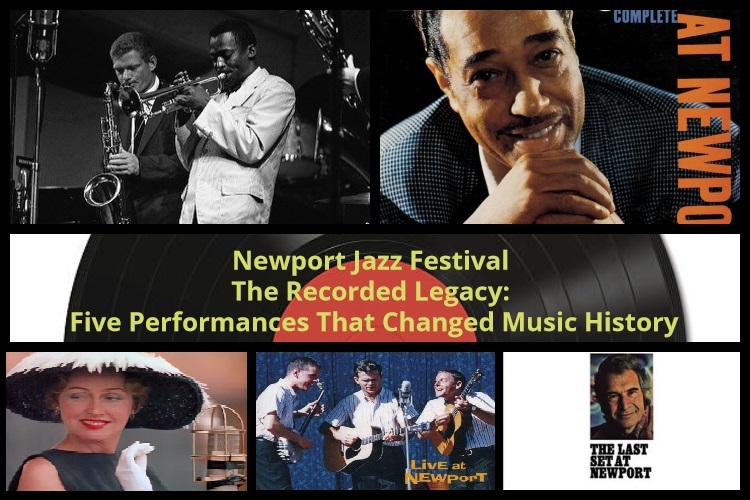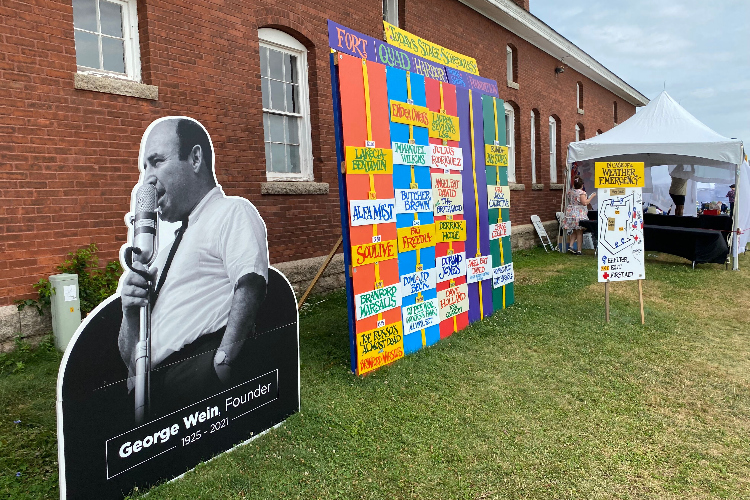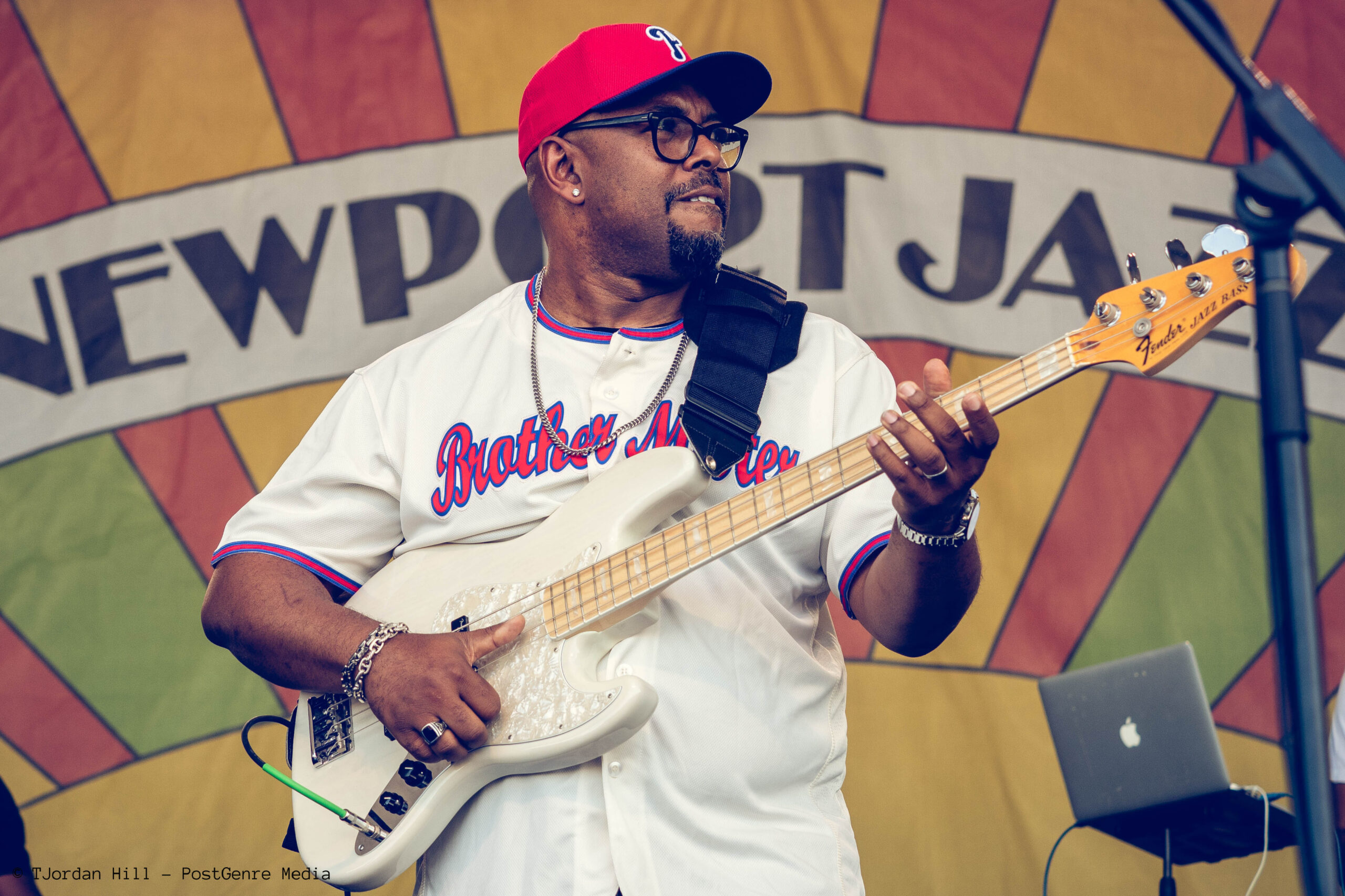The Recorded Legacy: Five Newport Performances that Changed Music History
|
Getting your Trinity Audio player ready...
|
One cannot adequately assess the history of the Newport Jazz Festival without examining the recordings captured at the event through the years. In many ways approaching the recorded history of Newport is a gargantuan task. Discogs currently reflects 3,292 Newport Jazz releases. Many of these are reissues of albums, and several more may be mislabeled entries. But even whittled down, one sees a massive volume of releases from the world’s premiere jazz festival. And that’s only official releases.
Instead of trying to review all available output across Newport’s history, this series will analyze how different topics emerge throughout recordings. Our first offering explores five Newport performances that meaningfully changed history. These performances were more than mere sets; they were events that changed the trajectory of modern music.
Miles Davis, 1955
“As much as I liked the music I was now doing, I think my name in the clubs was still shit, and a lot of critics probably still thought I was a junkie. I wasn’t real popular at this time, but that began to change after I played at the Newport Jazz Festival in 1955.” – Miles Davis.
1955 was a rough year in the history of jazz. One of its greatest minds, Charlie Parker, died of a heroin overdose at age 34. Bird’s bright young trumpeter, Miles Davis, had his career sidelined by his own fight with the same drug. Often labeled unreliable, Miles struggled to find work. Worse, he was disrespected by many. Even after recovery, these difficulties remained.
Before the 1955 Festival, Miles – who did not even have an active band – approached Newport Jazz producer George Wein, insisting he perform at the that summer’s event. Wein hesitated but took a risk. Wedged between July 17th sets by Count Basie and Dave Brubeck was an impromptu set by Miles with Thelonious Monk, Zoot Sims, Gerry Mulligan, Percy Heath, and Connie Kay. After the up-tempo Monk composition “Hackensack” the trumpeter placed the bell of his horn right up to a microphone. Out came a tone that balanced light and dark, one which was shimmering yet difficult to perceive. It fit the underlying composition “‘Round Midnight” perfectly. The audience loved it. As Miles later recounted in his autobiography, “[w]hen I got off the bandstand, everybody was looking at me like I was a king or something.” Perhaps most importantly, it led to Miles’ signing with Columbia Records, a label for which he would release many groundbreaking albums over the next thirty years, including Kind of Blue (Columbia, 1959) and Bitches Brew (Columbia, 1970).
Duke Ellington, 1956
“I was born at Newport in 1956.” – Duke Ellington
By the mid to late 1950s, Edward Kennedy Ellington had already established himself as one of America’s great artists. But rock reigned supreme. Many people were no longer interested in big bands, with many disbanding entirely. Ellington’s band persevered but was so desperate for gigs that they even performed at ice skating rinks. The Orchestra lacked an active recording contract. Many of its best musicians already left for other ventures anyway. Rumors spread that the leader could no longer afford to keep the band touring. But George Wein knew that though popular tastes ebbed and flowed over time, musical brilliance never wanes. He booked Ellington’s Orchestra to perform at Freebody Park on Saturday July 7th.
The Orchestra’s performance started with a lukewarm reception from the audience. But then the pianist decided to combine two 1937 tunes into one: “Diminuendo and Crescendo in Blue.” For years, Ellington tried to keep the pieces apart. But now they would be united with a 27 chorus solo provided by tenor sax player Paul Gonsalves, where no sax solo previously existed at all. As the song progressed, a platinum blonde woman wearing a dark evening dress jumped from her seat to dance, and the increasingly frenzied crowd followed her. By the end, as Wein recalled, “the applause and cheering was immense – stronger, louder, and more massive than anything ever heard at a jazz concert before.” It is now widely held as one of the best performances of Ellington’s career, spurring a revival for the Orchestra and getting them signed to Columbia for a record deal. The latter produced the classic Ellington at Newport (Columbia, 1956). In the words of Wein, the performance “stood for everything that jazz had been and could be.”
Anita O’Day – Jazz on a Summer’s Day, 1958
“There is not a moment that, freeze framed, would not be an absolutely stunning still picture.” – Judith Crist, film critic.
It is fitting that the first modern jazz festival would birth the first modern concert film. But Jazz on a Summer’s Day (Galaxy Attractions, 1959) is far from a perfect record of the music performed at the 1958 Newport Jazz Festival. Several incredible performances from the weekend – including those by Ray Charles and Miles Davis with his First Great Quintet – are nowhere to be found. Some of the film’s scenes are not even from Newport at all. Instead, evocative of the Summer’s Day’s opening scenes, one finds a watery reflection of the ethos of the Festival of that era.
That perspective – of capturing the aesthetic surrounding the music as much as the music itself- can be evidenced in the multiple shots of various audience members and of tourists strolling and partying through a beach town. The film, Bert Stern’s only foray into directing, emphasizes color, light, and fashion. In his own words, Stern hoped to show “the form and beauty of jazz by the various devices, such as wave and water effects, children playing and reflections.” He also emphasizes the significance of interaction between listeners and the artist. Of course, Summer’s Day captures several performances but, for better or worse, one stands out: Anita O’Day. Stern lingers on O’Day’s stylish performance in both attire and stage presence. But, with the passage of time has shown, O’Day’s set is less about her performance and more about the interplay between performer and audience. As such, Stern set the course for concert films even for those far removed from jazz – from Woodstock (Warner Bros., 1970) to Stop Making Sense (Arnold Stiefel, 1984).
The Kingston Trio, 1959
“Newport had been accused of commercialism almost from the start, but the allegations reached a fever pitch this year.” – George Wein
In full disclosure, this recording is of the Kingston Trio’s 1959 Newport Folk Festival performance, not Jazz. However, the 1959 Newport Jazz Festival is inextricably woven into the story of this recording. While history records the final year of the Nifty Fifties as a golden period for jazz, audiences continued to flock to other music. The Kingston Trio’s pop-folk vocal-led sound had a particularly large following. Arguably, the Kingston Trio was the biggest group in the country at the time. When George Wein booked the group for a Cape Cod performance earlier that summer, tickets sold in numbers far outpacing jazz artists.
Wein saw an opportunity to drive attendance to the Jazz Festival and booked the group to perform as part of a folk focused Sunday afternoon. The press decried the selection, primarily due to the band’s lack of connections to jazz music. The outrage ultimately inspired Wein to create a sister festival that summer. It aimed to host the Trio and others in the burgeoning folk revival movement. The Kingston Trio agreed to play the inaugural event, but only if they could also keep their Jazz set. Wein relented. In the process, the Newport Folk Festival was born, an event with its own rich, and continuing, legacy.
Dave Brubeck, 1971
“What they had buried at Newport in 1971 was a jazz festival and an institution” – George Wein
In the seventeen years since its founding in 1954, Newport Jazz continually grew and changed. It wasn’t always a smooth transition. On July 2, 1960, the Governor of Rhode Island sent in the National Guard to quell a riot, prompting the cancellation of its 1961 edition. In 1969, the year Newport invested heavily in rock, nearly the same happened again. This time, stopped only by Led Zeppelin controlling the crowd. But then there was 1971.
George Wein booked a young blues based band to play Sunday night. But between signing and performance, the previously unknown Allman Brothers Band became massively popular. After the chaos caused by events like Woodstock and Altamont, there were almost no major rock festivals in the summer of 1971; but Newport had Allman. During the weekend, nearly ten thousand young people traveled to Newport to sit on the hills overlooking the venue at Festival Field, not paying a dime for admission. Many were on drugs and demanded that all music be “free” and the gates to the Field torn down.
On the evening of Saturday, July 3, swarms of people began climbing different segments of the eight-foot high fence around the Field. The chaos hit a boiling point during the performance by Dave Brubeck’s Quartet. “Blues for Newport” is a fitting tune to encapsulate the moment as its loud wailing is as if the artist was saying goodbye to an old friend. And a piece from Brubeck’s The Gates of Justice cantata, “Open the Gates (Out of the Way of the People)” takes on an increased poignancy as it calls for the destruction of barriers for the sake of justice. Not obliteration in furtherance of selfish whims, as was the case in the mess on the hills. The gates would not finally break until Dionne Warwick’s “What the World Needs Now,” but Brubeck’s performance is essentially jazz’s farewell to one of its first major institutions.
Following a decade-long exile in New York, the Festival returned to Newport, stronger than ever. The death of the initial incarnation of the Newport Jazz Festival was necessary to ensure its continued survival. And Brubeck, who played as the gates descendant around him, would ultimately perform at Newport more than anyone else in its history.
Stay Tuned for the Next Chapter of our Recorded Legacy Series: Five Modern Masters at Newport
Be a Part of History. The 2023 Newport Jazz Festival Will Take Place from August 4th to 6th at Fort Adams State Park in Newport, Rhode Island. More Information is Available on Their Website.




Do you know what year Brubeck and Sons and Miles Davis performed on the Staten Island Ferry?